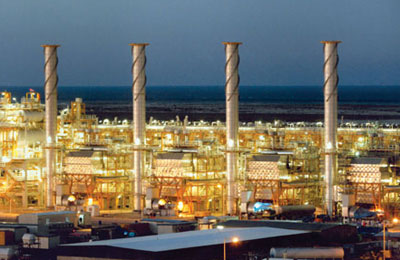
Morgan Stanley to set up natural gas export plant
New York, August 29, 2014
Morgan Stanley has quietly filed plans to build and run one of the first US compressed natural gas export facilities, the first sign the bank is plunging back into physical commodity markets even as it sells its physical oil business.
In a 23-page application to the US Department of Energy's Office of Fossil Energy submitted in May, the Wall Street bank outlined a proposal to build, own and operate a compression and container loading facility near Freeport, Texas, which will have capacity to ship 60 billion cubic feet a year of compressed natural gas (CNG).
While the size of the project is small compared with bigger liquefied natural gas (LNG) projects, the plan highlights the bank's ability to exploit its status as one of two Wall Street banks which are allowed to own and operate infrastructure for the manufacture, storage and operation of raw materials. The other one is Goldman Sachs.
Their physical commodities activities were both "grandfathered" in when they became bank holding companies during the financial crisis more than five years ago.
It also showcases a nimble and novel approach to exporting cheap domestic gas that could replace oil for power plants in Caribbean nations, as the United States pumps out record amounts of gas from its fracking revolution.
The strategy skirts the multibillion-dollar upfront investments, long lead times and stringent application processes associated with building liquefied natural gas (LNG) terminals in favor of using readily-available containers and inexpensive container ships, in one of the first projects of its kind.
The bank plans to ship CNG to countries with which the US has free trade agreements, including the Dominican Republic, Panama, Guatemala, El Salvador, Honduras and Costa Rica, according to the filing, which has not been previously reported.
Those countries now mainly use oil for their power plants. Natural gas, which in the US is often used to power trucks and buses, could provide a cheaper alternative.
"You can collect US gas at $4, it costs you $1 to ship it and gasify it, you bring it in at $5 and the equivalent that they are paying for fuel is $20 plus," said a person familiar with the project. "There is a lot of money to be made."
A spokeswoman for Morgan Stanley declined to comment on the plan beyond the contents of the filing.
The boom in natural gas production in the US has pushed prices down to $4.02 per million British thermal units. Natural gas contracts sold outside of the US are often linked to higher-priced oil, which can inflate the cost of the gas.
The US Energy Information Administration projects total domestic natural gas production to hit 73.9 billion cubic feet per day, portending sustained low prices going forward. About 1,000 cubic feet of natural gas yields 1 million BTU. One barrel of oil is roughly equivalent to 5,800 cubic feet of natural gas.
Billions of dollars are being poured into sophisticated export terminals for LNG, which require specialized equipment to cool the fuel to turn it into a liquid, as well as infrastructure to warm it at the receiving end, and take years to build.
Cheniere Energy, for example, is investing $5.6 billion to expand its Sabine Pass terminal in Louisiana to export LNG, which is expected to be operational by 2015.
The permitting process is also lengthy, with almost two dozen applications awaiting approval.
By contrast, the source familiar with Morgan Stanley's plans estimated the cost of building the plant at $30 million to $50 million, with minimal investment needed on the receiving end. The bulk of the expenditure would be in buying thousands of containers to ship the gas.
"They'll lease some land, buy some cranes," he said. "But you need literally thousands of these containers."
It will take 12 months to complete the plant from the time Morgan Stanley receives final regulatory approvals, according to the filing.
In November 2013, Florida-based energy company Emera CNG LLC applied to export 9.125 billion square feet a year; the status of its application is not clear and its lawyers and executives did not return calls for comment in time for publication.
Andy Weissman, an energy lawyer at Haynes Boone in Washington, said the Morgan Stanley proposal was one of the first such CNG export projects he was aware of.
"This could be something very significant, and if it was done successfully, there would undoubtedly be more of these," he said.
The 50-acre proposed site in Texas is currently being inspected for suitability, according to a second source familiar with the plans. Freeport is a deepwater port on the Gulf of Mexico with a 45-foot draft, and already receives large container ships carrying tropical fruits imported by Dole and Chiquita.
Morgan Stanley will lease pre-existing loading docks there, but plans to supply the containers itself, said the second source.
According to the filing, gas would be piped into the proposed facility on an 11-mile third-party pipeline connected to the Brazoria Interconnector Gas Pipeline (BIG), which moves natural gas within Texas. Gas that travels in a pipeline is already compressed.
After further compressing and containerizing the gas, Morgan Stanley can load the pressurized natural gas containers on standard container ships.
"It's a logistics nightmare, putting [the gas] in containers and shipping them around - it's hard to do. Most people can't figure out how to make money doing it," said the second source. "For once, the price of gas is low enough that it makes sense," he added.-Reuters







